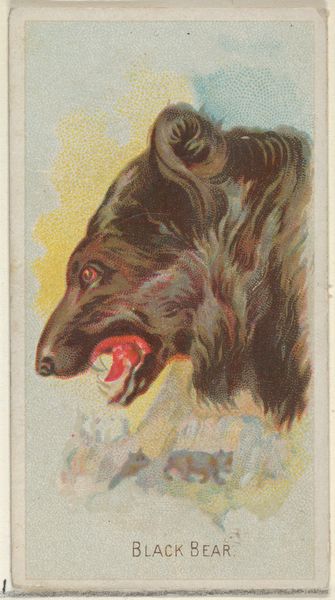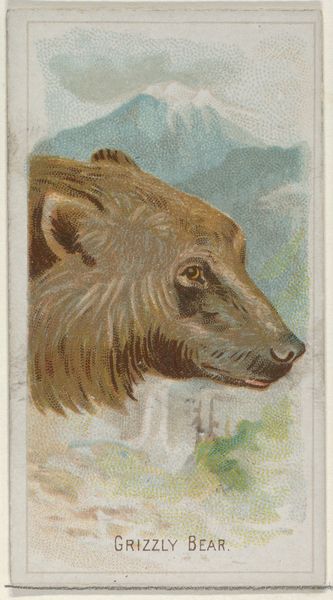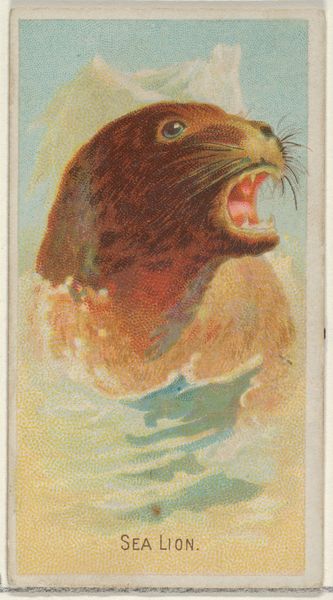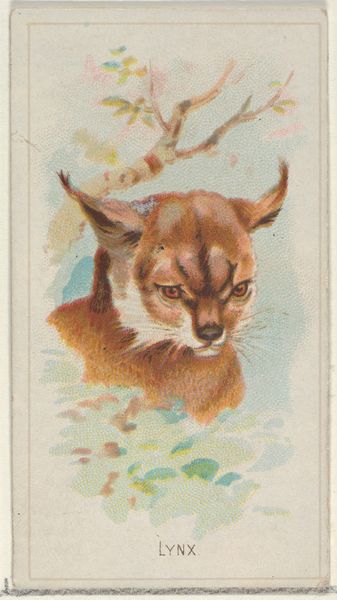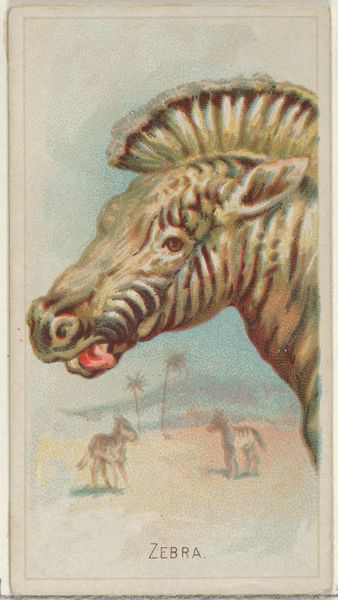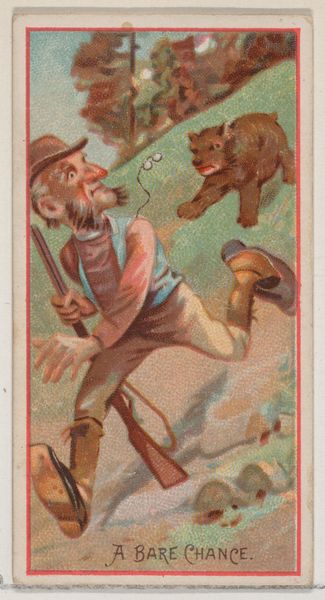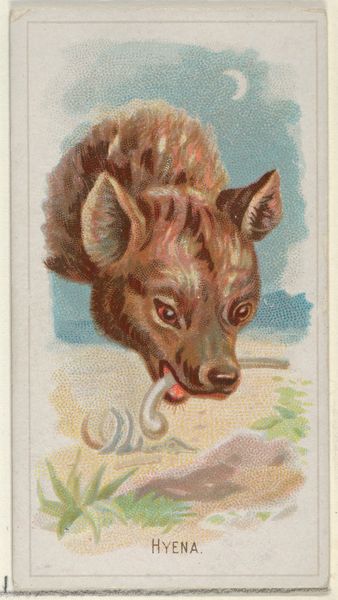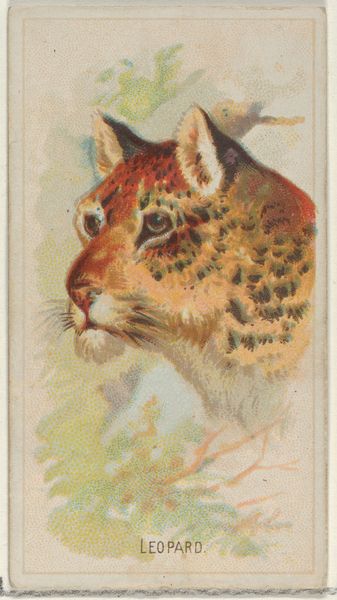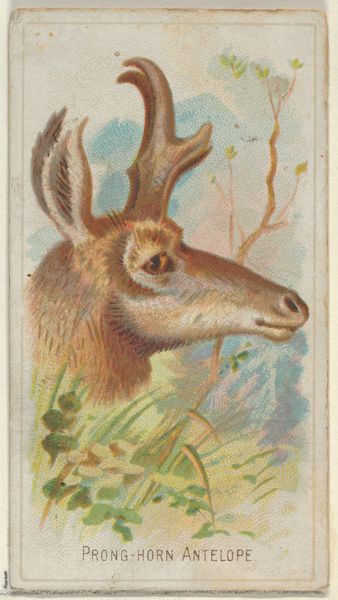
Polar Bear, from the Wild Animals of the World series (N25) for Allen & Ginter Cigarettes 1888
0:00
0:00
drawing, print, watercolor
#
portrait
#
drawing
#
still-life-photography
# print
#
watercolor
#
animal portrait
#
watercolour illustration
Dimensions: Sheet: 2 3/4 x 1 1/2 in. (7 x 3.8 cm)
Copyright: Public Domain
Curator: I'm struck by the vulnerability in those eyes. The opened mouth should be fierce, but there’s a different story in the gaze. Editor: We’re looking at "Polar Bear," a print from the "Wild Animals of the World" series by Allen & Ginter, dating back to 1888. It’s a fascinating watercolor and drawing combination that’s part of a larger set originally inserted in cigarette packs. Curator: It's such a curious format for what feels like a commentary on imperialism's reach into vulnerable environments, particularly within a turn-of-the-century social and political sphere of resource extraction. The portrait's framing is telling; it feels extracted, commodified. How do the visual elements build up the symbolism for you? Editor: Immediately I’m drawn to the chromatic scheme. The choice of soft pastel colors is intriguing, lending a sentimental aura that softens the power usually associated with the polar bear as an apex predator. The slightly open mouth and exposed teeth speak to raw power. But then the eyes. Are they pleading or threatening? Curator: Perhaps they symbolize the plight of the natural world during rapid industrial expansion. It makes one question what kind of world this printed collectible promotes. Is it meant to evoke the thrill of conquest or ecological responsibility? The consumption, quite literally, is built into the format itself—bundled with tobacco. Editor: True, and notice how the bear almost seems superimposed on this soft, hazy backdrop, separated and adrift within its environment. It does feel isolated. It reminds me of emblems of endangered species adopted as flags or heraldic devices. There is a melancholic element to its gaze. It speaks to a lost grandeur. Curator: The use of a seemingly benign watercolor technique on such an overtly charged symbol is itself a form of power—it softens what is a story of violent extraction. It’s important to recognize that Allen & Ginter did not merely produce images, they were active participants in the visual rhetoric of the time, constructing and promoting narratives about nature and control. Editor: Seeing the details of color saturation and delicate drawing—and putting this object within the context of both the period and the current climate crisis—sharpens one's attention to details we might miss. Thank you for that crucial sociohistorical perspective.
Comments
No comments
Be the first to comment and join the conversation on the ultimate creative platform.
